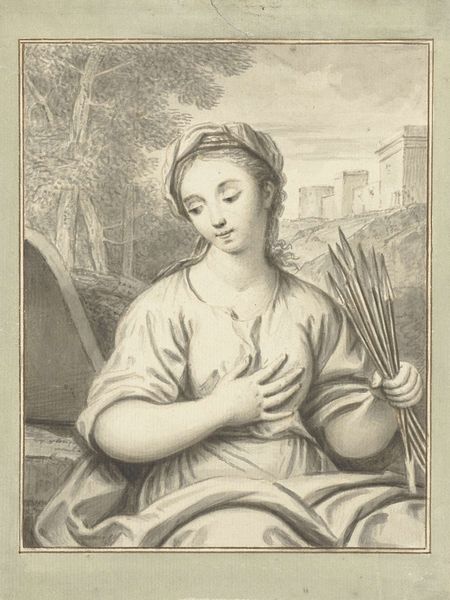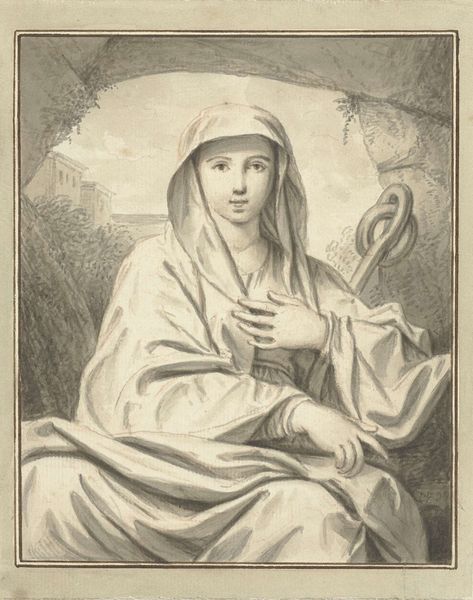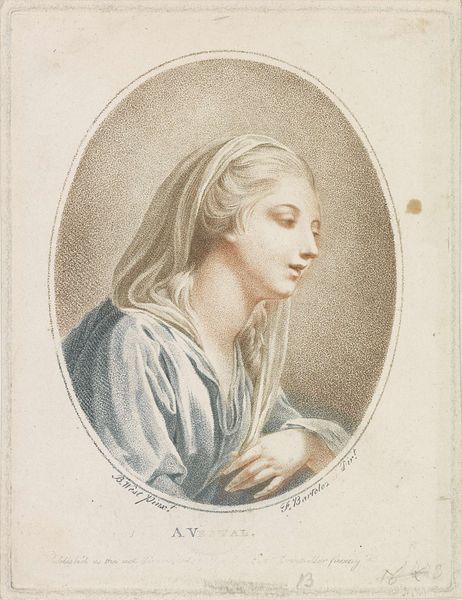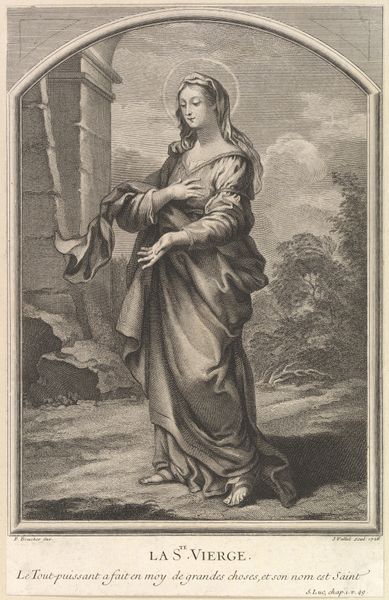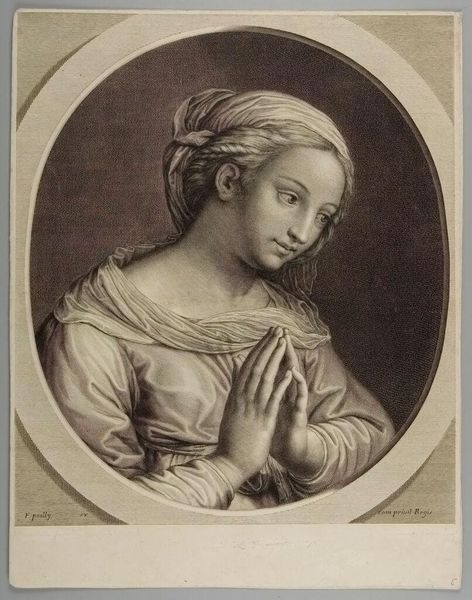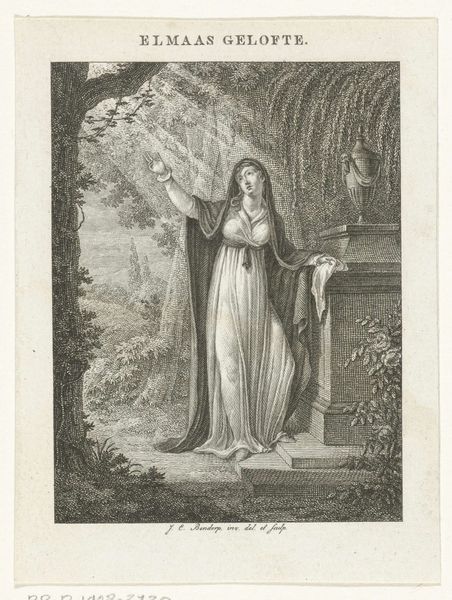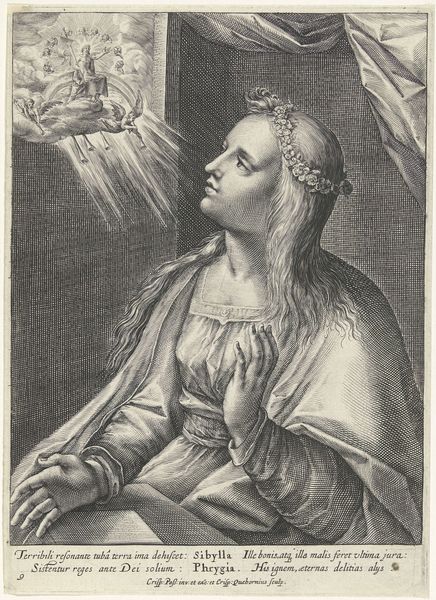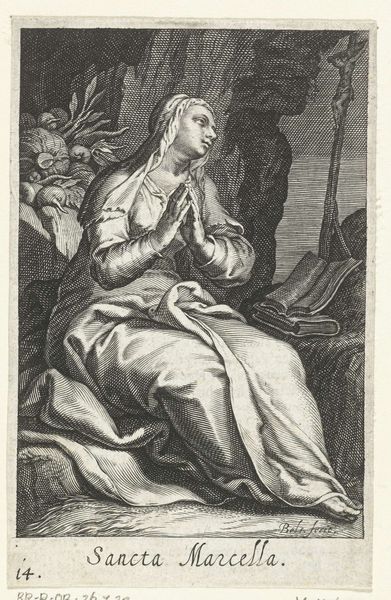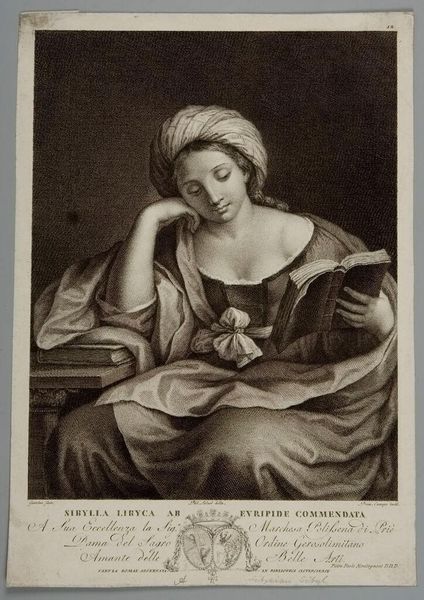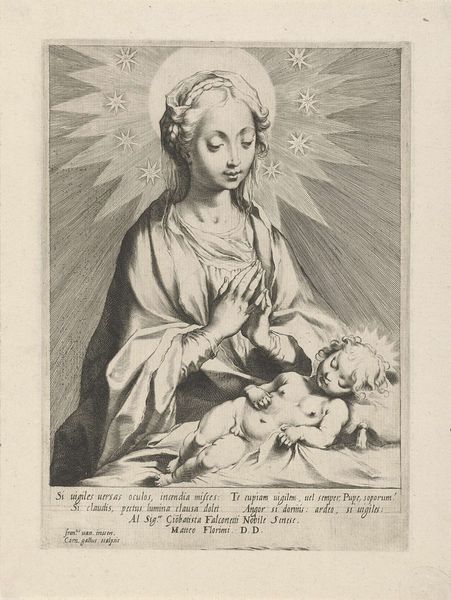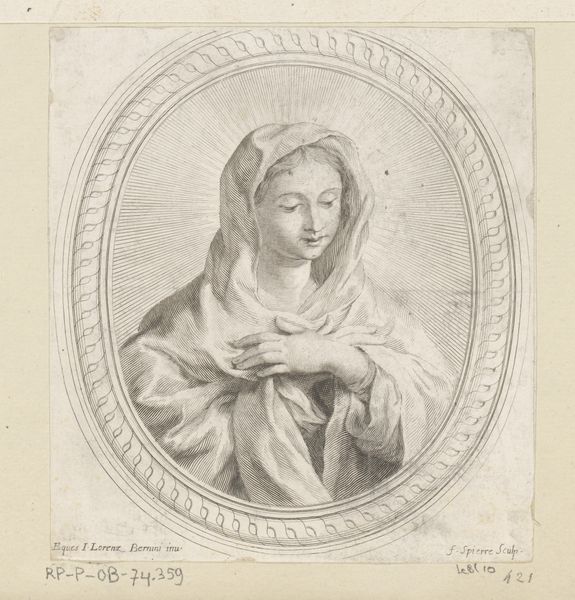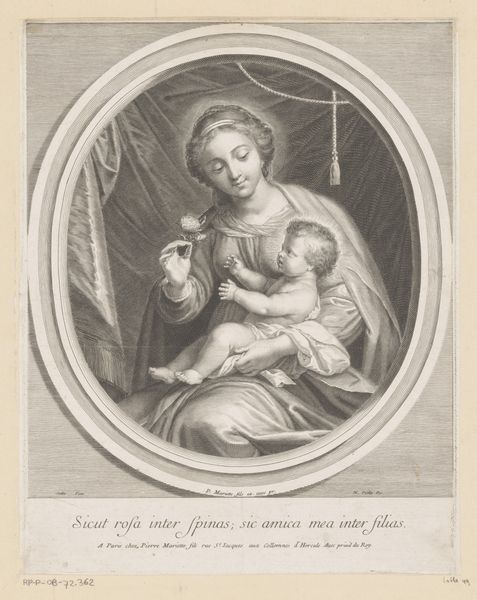
drawing, pencil
#
portrait
#
pencil drawn
#
drawing
#
caricature
#
pencil drawing
#
pencil
#
portrait drawing
#
genre-painting
#
academic-art
#
rococo
Dimensions: height 183 mm, width 143 mm
Copyright: Rijks Museum: Open Domain
Louis Fabritius Dubourg created this drawing, "De Dankbaarheid," in 1746, using pen, gray ink, and gray wash. It's now held at the Rijksmuseum. Dubourg, working in the Dutch Republic during its economic Golden Age, presents us with a classical allegory of gratitude. We see a woman holding fruit, perhaps alluding to the bounty of nature, set within an idealized landscape with classical motifs. But why gratitude? What was there to be grateful for? Consider the complex social dynamics of the Dutch Republic at this time. The Republic was a major economic power, but its wealth was built on trade and colonialism. The art market itself was booming. Artists relied on wealthy patrons and the institutions of art to succeed. Was Dubourg questioning these power structures? The figure's humble demeanor might suggest a critique of the very institutions that supported artists like him. By studying the social conditions of 18th-century Dutch society and researching the patronage system, we can begin to understand the nuances of the artwork. What did gratitude mean in a society built on trade, colonialism, and a growing art market?
Comments
No comments
Be the first to comment and join the conversation on the ultimate creative platform.
